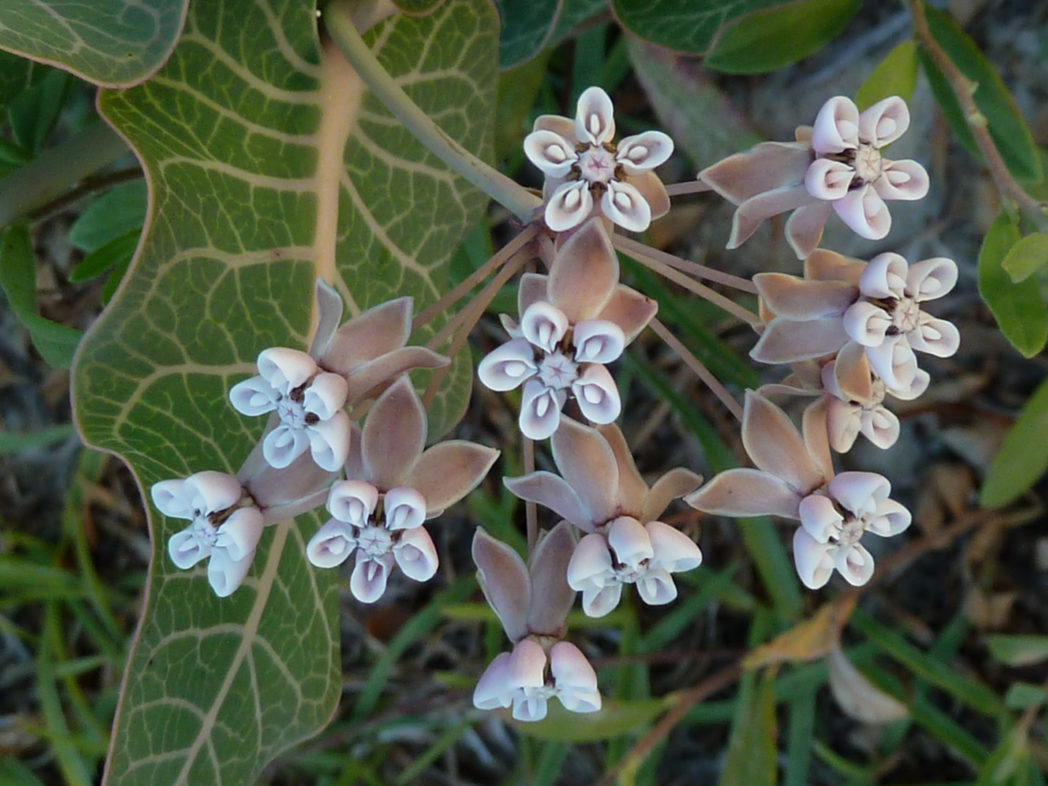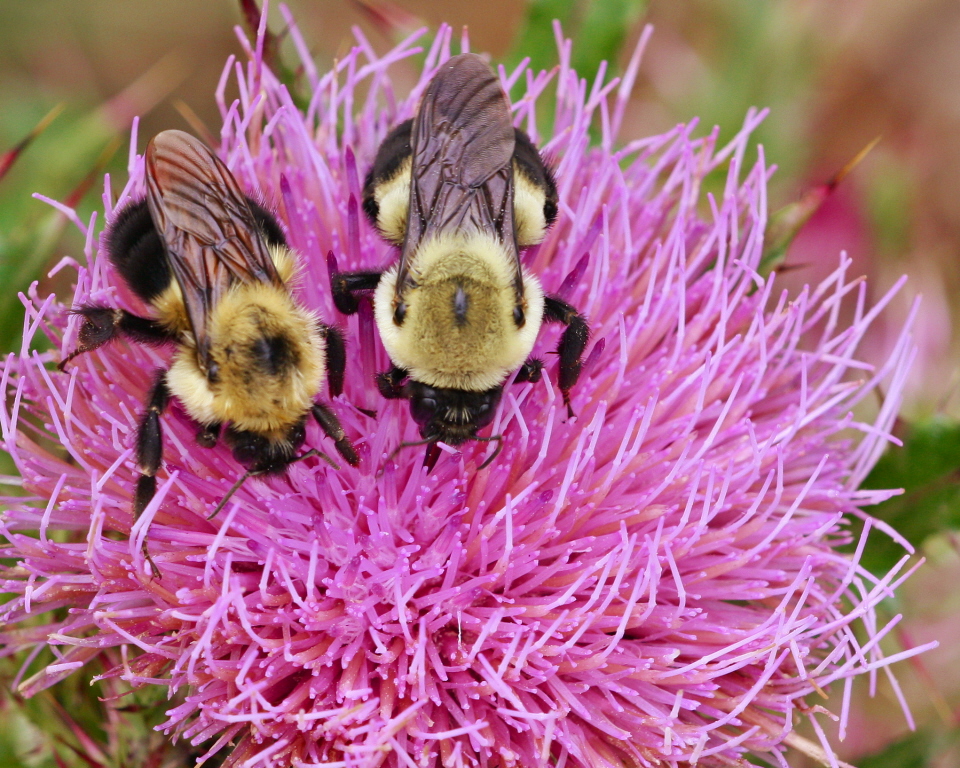Bloom report: Unseasonal heat affects spring wildflower display
Pictured above: Common eastern bumble bee (Bombus impatiens) on purple thistle (Cirsium horridulum). Photo by Mary Keim
The relatively mild winter with above normal temperatures in many areas, along with limited rain in some parts of the state (especially Central Florida), have had profound effects on flowering. In North Florida, wildflowers, and even native trees and shrubs, are blooming two to four weeks earlier than normal. But in south Central Florida Nancy Bissett, restoration ecologist and co-owner of The Natives nursery, noted that “…spring came much later than normal.” However, in South Florida, blooming time seems about normal, according to Roger Hammer, naturalist, author, botanist and photographer.
Over the next few months, expect above-normal temperatures to continue in most parts of Florida, with rain about normal (which isn’t much in April and May). And, for all but the western Panhandle, it’s possible that drought conditions may occur.
All that being said, the best spring wildflower displays should be in moist areas, as well as species adapted to dry, well-drained soils. No matter what part of the state you’re in, common ones along roadsides in moist areas include:
- Blue: Narrowleaf blue-eyed grass (Sisyrinchium angustifolium; some are purplish)
- Pinkish: Rosy camphorweed (Pluchea baccharis)
- Purple: Lyreleaf sage (Salvia lyrata); Purple thistle (Cirsium horridulum) (pictured above); Savanna iris (Iris savannarum);
- Reddish: Leafless beaked orchid (Sacoila lanceolata var. lanceolata)
- White: Starrush whitetop (Rhynchospora colorata); Zephyrlily (Zephyranthes spp.)
- Yellow: Black-eyed Susan (Rudbeckia hirta) (central and south Florida; in North Florida, Black-eyed Susan occurs in dry to slightly dry areas); Leavenworth’s tickseed (Coreopsis leavenworthii); Southeastern sneezeweed (Helenium pinnatifidum); Yellow colicroot (Aletris lutea)

Dry adapted species may fare well
And in dry, well-drained soils, Claudia Larsen, of Micanopy Wildflowers, expects a “bumper crop” of wildflowers. She’s already seeing “fields of Tread-softly (Cnidoscolus stimulosus) with their bright white flowers” and pointed out that they are “armed with painful, stiff, stinging hairs.” Other roadside wildflowers common across the state in dry areas include:
- Red: Coral bean (Erythrina herbacea)
- White: Fleabane (Erigeron spp.) (sometimes pinkish purple); Pineland milkweed (Asclepias humistrata)(pictured above)
- Yellow: Florida greeneyes (Berlandiera subacaulis); Soft greeneyes (Berlandiera pumila)
- Yellow/red: Blanketflower (Gaillardia pulchella)
Along roadsides from the Panhandle to Central Florida there are spectacular displays of Drummond phlox (Phlox drummondii), with mainly red, pink and purple flowers. From Ocala north, large stands of the yellow Goldenmane tickseed (Coreopsis basalis) are starting to bloom and should continue well into May. Non-native Drummond phlox has naturalized along many roadsides and adjacent fields. Whether Goldenmane tickseed is native to Florida is less clear, although it’s currently classified as non-native (see Goldenmane tickseed — native to Florida or Texas native naturalized in Florida?)
Dr. Jeff Norcini serves as a Florida Wildflower Foundation consultant through his business, OecoHort LLC, and is FDOT’s Wildflower and Horticultural Specialist. Thank you to Nancy Bissett, Bob Farley, Roger Hammer, Claudia Larsen and Wendy Poag for their observations.

